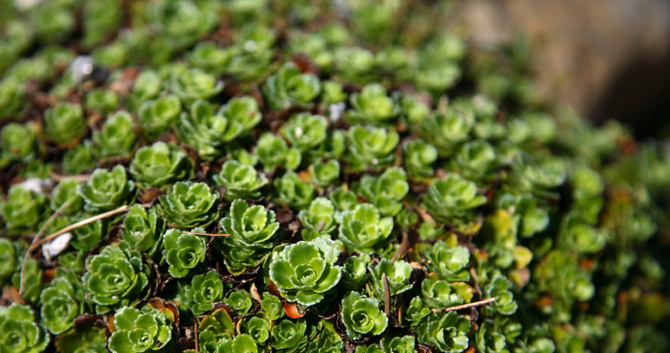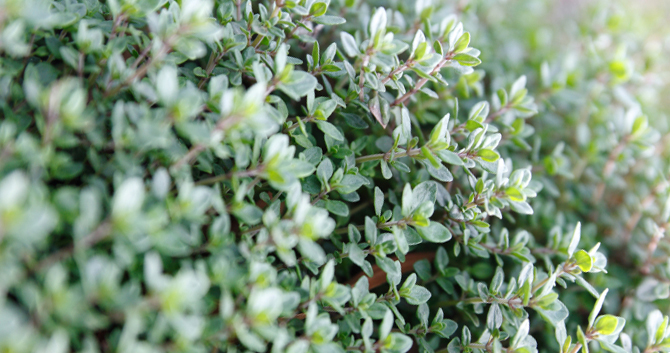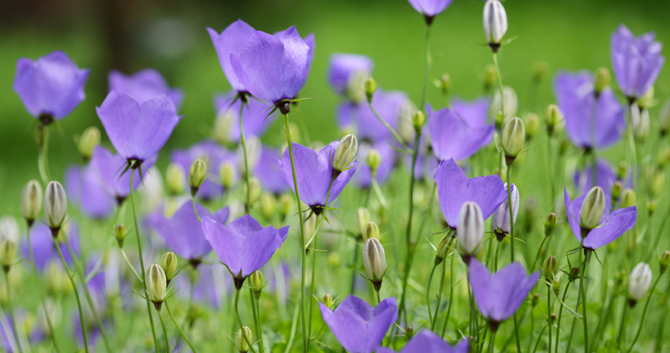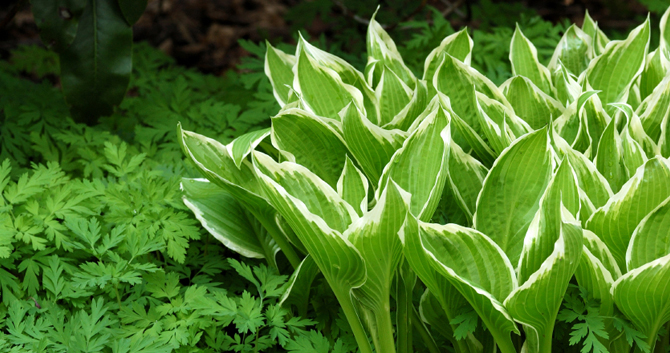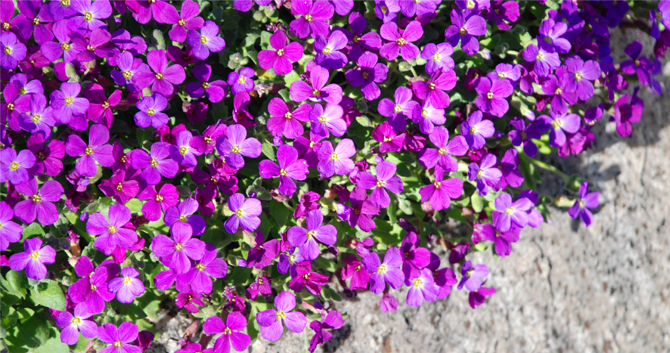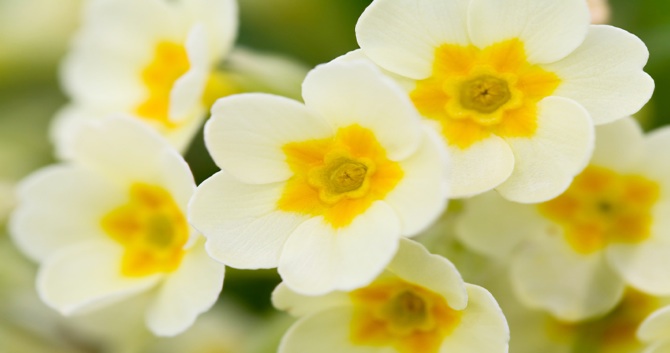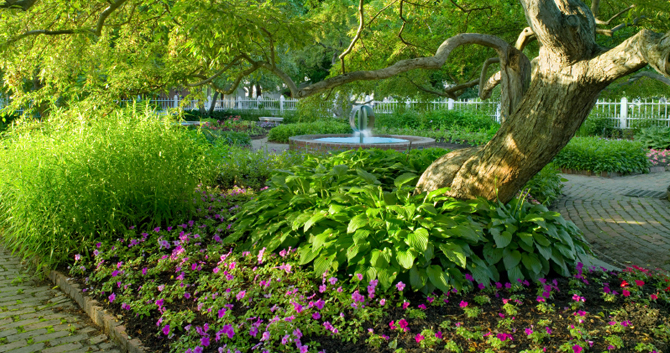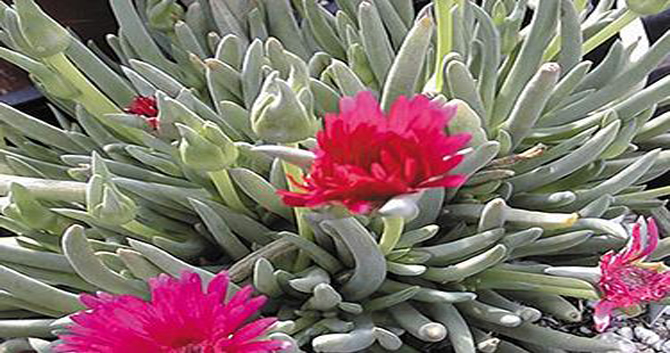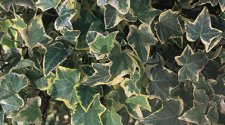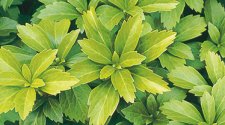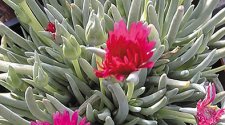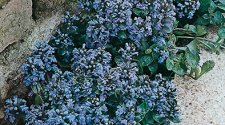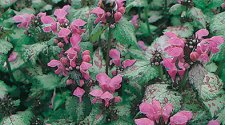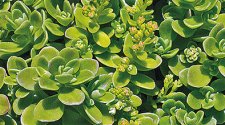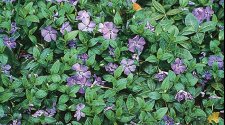Ground covers are the unsung heroes in the landscape—adding interest, preventing erosion, keeping the weeds down, and reducing the need to water and mow. And these earth-friendly plants ask little in return—thriving with little care, in conditions and places where few other plants can.
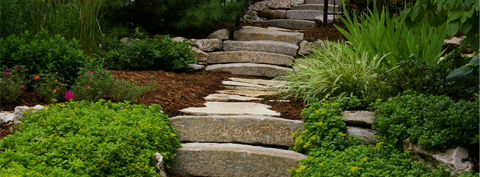 For areas difficult to mow around steps and walkways, ground covers offer a compact and attractive solution.
For areas difficult to mow around steps and walkways, ground covers offer a compact and attractive solution.
Try ground covers where grass won’t grow or is hard to mow—on sloping hills, in tight spaces, along cobblestone walks or driveways, or beneath old shade trees. Or really go green and replace your high maintenance, water-loving lawn with a soft carpet of ground cover—it uses less water than traditional lawns, is easy to grow, and spreads readily.
You’ll be amazed at the wide array of ground covers available at your local garden center. Thanks to growing interest, there’s been an explosion of new varieties—blooming and otherwise— that tolerate the toughest conditions—shade, drought, hot sun, soggy spaces, even heavy foot traffic.
Which is right for you? Like all plants, it just depends on your light and water conditions, so be sure to check the tag and select plants that thrive in your environment. Then go ahead! Weave an outdoor carpet of your own design—shag, tufted, plush, or flowered. The possibilities are practically endless.
Design Tips
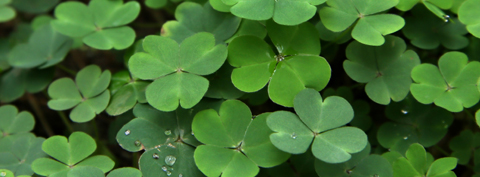 Clover stays green even during the driest periods and is resilient to foot traffic.
Clover stays green even during the driest periods and is resilient to foot traffic.
Combine ground covers of varying heights, textures, and shades to create a subtle quilt of color and texture. Use small-leaved, smooth-textured ground covers in broad, curved plantings to convey a feeling of spaciousness. Use large-leaved, coarse-textured ground covers for a feeling of closeness.
Ground covers are great for adding soft texture between stepping stones and creating a sense of movement spilling over walls, around rocks, and underneath benches. They can also be used to define the spaces and contours of a garden and soften the transition from a lawn to larger flowering plants and evergreen shrubs.
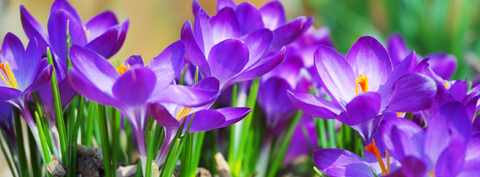 Crocus are the harbingers of spring, naturalizing for early color. Since they die-back after flowering, they can be easily integrated into a lawn.
Crocus are the harbingers of spring, naturalizing for early color. Since they die-back after flowering, they can be easily integrated into a lawn.
Try flowering ground covers, whose tiny blooms and masses of green foliage make for a changing display throughout the season. For spring color, pair creeping phlox, speedwell, candytuft, sweet woodruff, rockfoil, or rock cress with tulips, crocuses, and daffodils. For summer blooms, consider blue or white campanula, carpet roses, yellow coreopsis, purple veronica, cranesbill geranium, sedum, or primrose.

